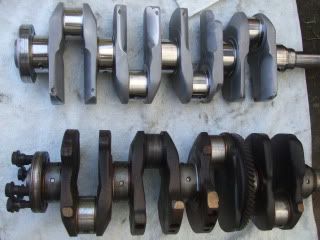kasperwhoo
New Member
- Joined
- Sep 17, 2009
- Messages
- 318

This is exactally what I want to do with my crank also I notice that this crank is an oem crank! What I was woundering is this machining to much or will the crank have to be a lightened something like 10lbs. And if so will I have problem stalling?





 I like the sounds of the response etc but I don't want to risk the longevity of my motor
I like the sounds of the response etc but I don't want to risk the longevity of my motor